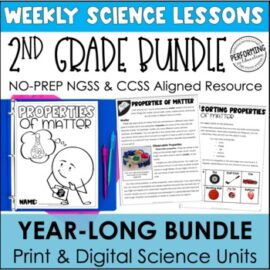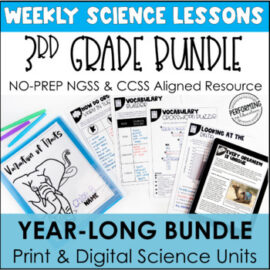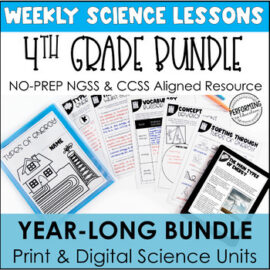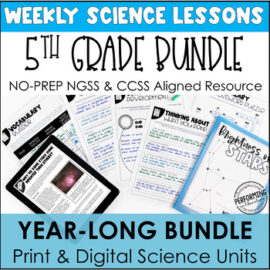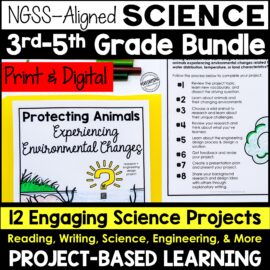This time of year, I’m gearing up for one of my favorite science units: animal adaptations. My students love learning about anything to do with animals, so I try to capitalize on their excitement by tying in as many reading and writing standards as I can to go along with our hands-on science activities.
I wanted to do something a little different, so I chose an animal many students may not be familiar with, even though it’s become surprisingly popular in books and media. In fact, some students don’t even know this animal actually exists! My animal adaptation unit centers around the “unicorn of the sea”, otherwise known as the narwhal.
Today, I’m sharing this FREE no-prep packet that’s perfect for teaching all about animal adaptations and physical traits. Keep reading to get my best tips for using this unit with your class.
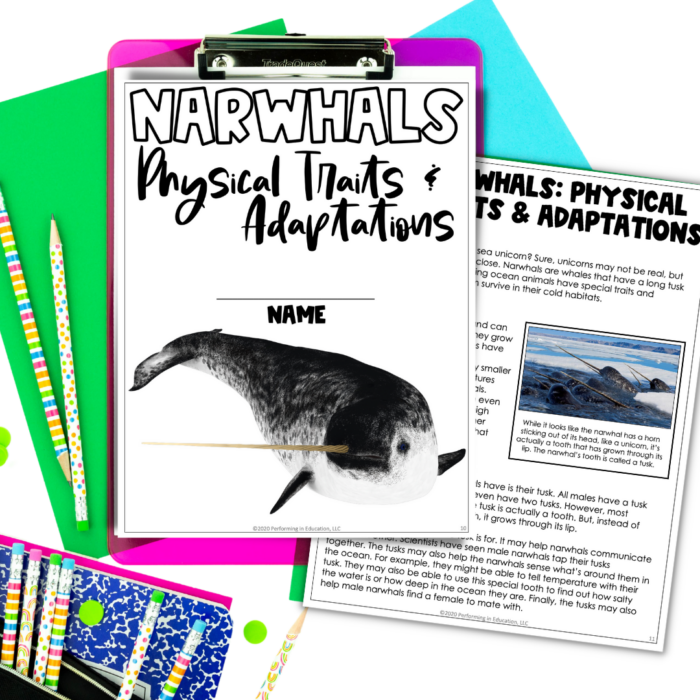
Get Them Thinking
Start by showing different images of animals in their natural environments. I like to pose a critical question for students to discuss, such as “How do organisms adapt to survive in their environment?” Students can share their observations about each animal’s physical traits and how these might help an animal survive.
Next, we build background using an anchor text. This provides core knowledge and a common vocabulary for students to use when discussing the topic of animal adaptations. Students can also apply close reading strategies as they work through the text. Plus, it’s got some great photographs of real narwhals for students to examine!
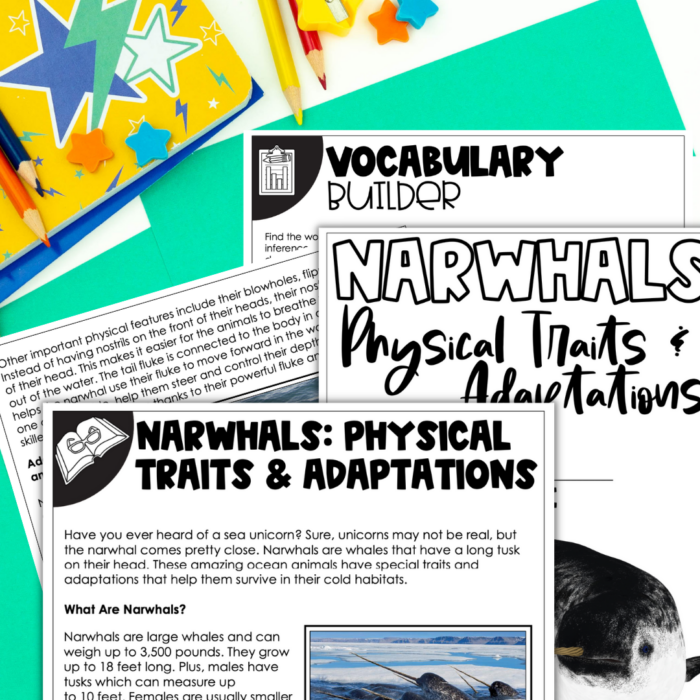
Finally, we complete a vocabulary activity. This is an important step to ensure students understand the key terms we’ll use the rest of the week. It also allows students to practice using context clues as they work to define each word.
Make an Animal Adaptation Scrapbook
After we’ve developed a foundation for animal adaptations, we choose more animals to study in depth. For each animal, we label the physical traits and discuss how each trait benefits the animal. I model the process for the class using the narwhal as an example.
Then, students choose their own animal to research. They can draw a picture or find an image to print and use. I encourage students to find at least 5 traits to label, noting the function of each trait, and how it helps the animal to survive. This activity is especially engaging to complete digitally, with students sharing their final product with a partner or a small group.
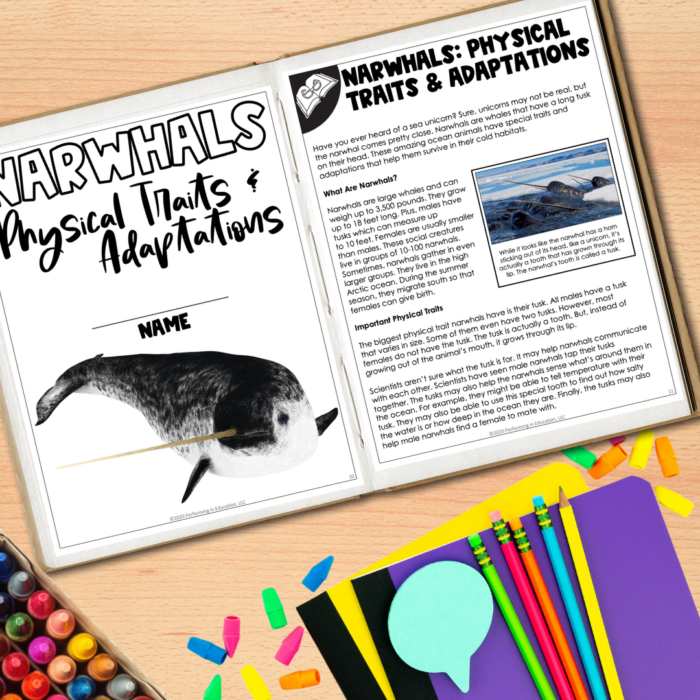
Communicate Learning
At the end of the week, students take everything they’ve learned about animal adaptations and physical traits and complete a writing piece. This is a great opportunity for students to independently show what they’ve learned. I love using writing in the content areas because it’s a practical and meaningful way for students to communicate their learning.
Looking for more no-prep science units? Check out my year-long science bundles! Available for 2nd, 3rd, 4th, and 5th grade, these print + digital units cover ALL your science standards for the year. Plus, each unit has a self-grading Google form assessment to make grading a breeze!
